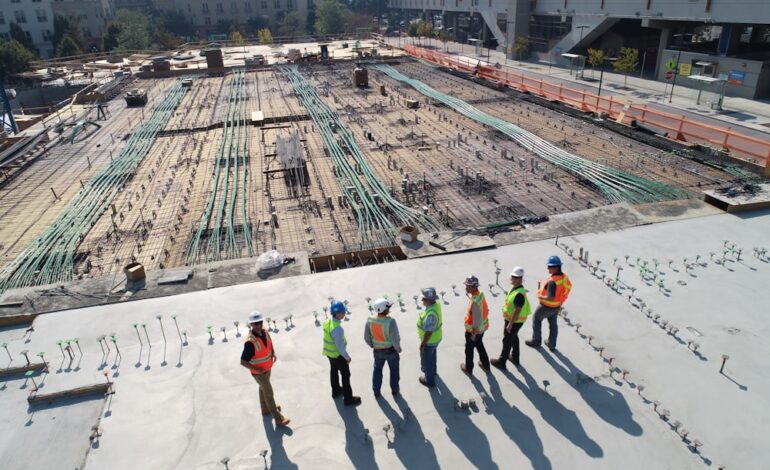Choosing the Right Bulldozer for Your Construction Project

Post Preview
Table of Contents:
- Introduction to Bulldozers
- Types and Sizes of Bulldozers
- Factors to Consider When Choosing a Bulldozer
- Cost Considerations and Budgeting
- Maintenance and Upkeep
- Safety Measures and Regulations
- Expert Tips for Bulldozer Operation
- Conclusion
Introduction to Bulldozers
Bulldozers have been a cornerstone in the construction industry for many years. With their extensive capabilities, these powerful machines are essential for various tasks such as grading, excavation, and demolition. However, choosing the right bulldozer size is crucial for a project’s success. Whether working on a small landscaping job or a large-scale construction project, understanding bulldozer sizes is critical to optimizing efficiency and performance.
With their diverse functionalities, bulldozers have revolutionized construction projects. These machines are indispensable from the initial land clearing to the final stages of site prep. The key to harnessing their full potential lies in selecting the right size and type for your needs.
Types and Sizes of Bulldozers
Bulldozers come in various sizes and are classified into small, medium, and large categories. Small bulldozers are compact and ideal for light-duty tasks and tight spaces. They are often used in residential areas for landscaping and minor site work where maneuverability is crucial. Medium-sized bulldozers offer a balance of power and maneuverability, suited for general construction tasks such as road building and site preparation. These machines strike a good balance between efficiency and versatility.
Giant bulldozers with massive blades and engines are designed for heavy-duty work such as mining and large-scale earthmoving projects. These beasts of machines are built to withstand rigorous tasks and can move vast amounts of material quickly. Each size has unique advantages and applications, making selecting the right one for your specific needs vital. Understanding each size category’s strengths and limitations helps make a more informed decision.
Specialized Bulldozers
Aside from the general categories, specialized bulldozers have unique features to handle specific tasks. For example, swamp bulldozers, with their wide tracks, are perfect for marshy terrains. These machines are designed to operate in conditions where standard bulldozers would struggle, offering better stability and traction. Similarly, high-lift bulldozers are designed for industries requiring the movement of heavy materials to higher points. This often includes loading trucks or placing materials on elevated platforms.
Factors to Consider When Choosing a Bulldozer
Selecting a suitable bulldozer involves considering various factors. First, assess the scope and terrain of your project. A large project on rocky terrain may require a more robust machine. Conversely, a smaller project in an urban environment may benefit from a more compact, maneuverable bulldozer.
Next, consider the power and performance needs. Make sure the bulldozer has sufficient horsepower to handle your workload efficiently. This ensures the machine can perform tasks like pushing and lifting without strain. Versatility is also crucial, So bulldozers with multiple attachment options should be looked for to increase functionality. Attachments such as rippers, winches, and blades can significantly enhance the utility of the machine.
Another crucial aspect to consider is the operational environment. Understanding whether the project site has specific requirements, such as limited space, rugged terrain, or the need for precision work, can guide your choice effectively.
Cost Considerations and Budgeting
When budgeting for a bulldozer, consider both initial and long-term costs. Purchasing a bulldozer involves a significant upfront investment, but it may offer better value in the long run compared to leasing. Ownership comes with the benefits of availability and customization, allowing the machine to be tailored to your specific project needs.
On the other hand, leasing can be more cost-effective for short-term projects or tight budget constraints. It is important to evaluate the costs and benefits before making a decision. Leasing can provide access to newer models with the latest technology without the total financial commitment of a purchase. Remember to account for operational costs such as fuel, repairs, and insurance, which can add up over time. These recurring expenses should be factored into the total cost of ownership to avoid budget overruns.
Maintenance and Upkeep
Regular maintenance is crucial for keeping bulldozers operational and extending their lifespan. Establish a maintenance schedule that includes routine checks, oil changes, and part replacements. Being proactive can prevent costly repairs and downtime.
Common issues such as hydraulic failures, track wear, and engine problems should be addressed promptly. Neglecting these problems can lead to more significant issues that are costlier to fix. Partnering with a reliable service provider ensures that all maintenance tasks are handled efficiently and effectively. A well-maintained bulldozer performs better and retains its value longer, proving to be a wise investment.
Safety Measures and Regulations
Safety should always be a top priority when operating bulldozers. Modern bulldozers have various safety features, such as rollover protection structures (ROPS) and seat belts. These features are designed to protect operators in an accident, reducing the risk of injury.
Additionally, operators should undergo comprehensive safety training to minimize risks. Proper training covers not only the operation of the machine but also safety protocols and emergency procedures. It is also essential to adhere to local and federal regulations governing construction equipment. The construction equipment safety guidelines provide a comprehensive framework to ensure compliance and promote safe working conditions. Regularly updating knowledge on these regulations is crucial for maintaining a safe work environment.
Expert Tips for Bulldozer Operation
Operators should be well-trained and certified for optimal performance. Efficient operation techniques, such as proper blade positioning and understanding soil conditions, can significantly enhance productivity.
Examples of real-life success stories offer valuable insights. For instance, a well-trained operator can complete a project faster and more efficiently, reducing downtime and costs. Investing in training programs can, therefore, yield substantial long-term benefits. Ensuring operators are familiar with the specific bulldozer model can also enhance operational efficiency and safety.
Conclusion
Choosing a suitable bulldozer is critical for the success of any construction project. You can make an informed decision by considering the types and sizes of bulldozers available, assessing various factors such as project scope and costs, and prioritizing safety and maintenance. Thorough research and careful planning will ensure that your chosen bulldozer meets your project requirements and contributes to its successful completion.




